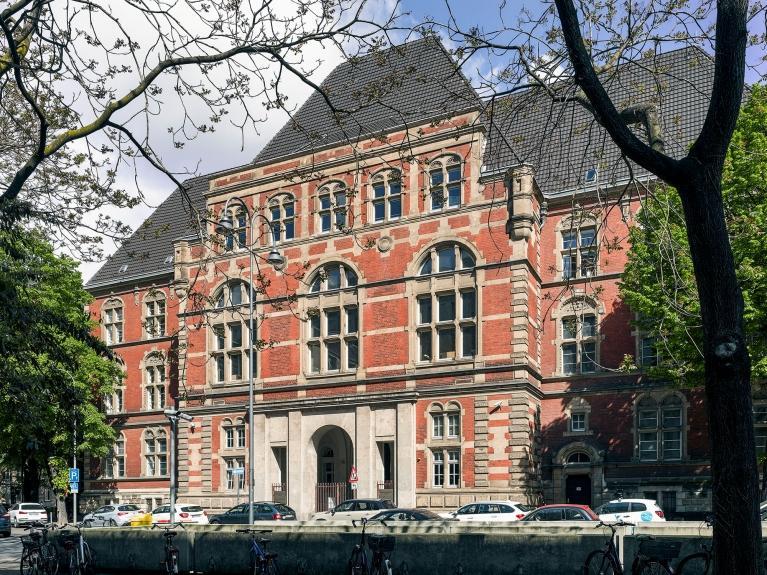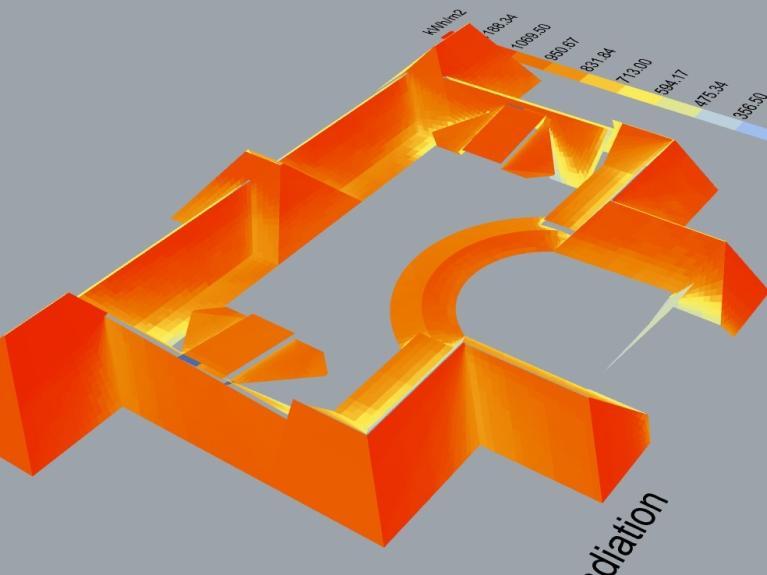Administrative and Finance Court, Cologne
Improving the energy efficiency of listed buildings and preserving the quality of listed buildings
The listed Cologne Administrative and Finance Court on Appellhofplatz was built in 1893 and, following severe damage in the Second World War, was partially rebuilt in a simplified solid construction (solid brickwork) in the post-war years.
As part of the energy consultation carried out by MorgenGrün, we have developed concepts that will make the building climate-neutral by 2030.
Heat demand can be reduced by almost half
We first analysed the consumption data and then determined the energy requirements of the administrative and finance court – the building technology and the energy condition of the building envelope were of crucial importance. The building is currently connected to the district heating network.
We were able to derive structural refurbishment recommendations for the building envelope from the results, whereby our team took into account the requirements of monument protection. Based on our proposals, the building's heating requirements can be reduced by almost half.
Our first premise was to use locally available CO2-neutral environmental energy. Among other things, we investigated geothermal energy (geothermal probes) and groundwater (wells). A groundwater well proved to be the best option in terms of efficiency and investment costs: The high possible extraction rates (500 kW) make it the most efficient. And it can be constructed without affecting any ground monuments.
Self-sufficiency level of more than 40 per cent possible
At the same time, we used a three-dimensional roof model to determine the potential of various photovoltaic roof systems based on radiation simulations. Here, too, we had to consider the requirements of monument protection and were able to show that more than a quarter of the building's electricity requirements could be covered by a PV system (175 kWp) that is not visible from the outside. If the roof area were utilised to the maximum, a degree of self-sufficiency of more than 40 per cent could be achieved.
Finally, we presented the client with several packages of measures with economic and energy evaluation criteria as a basis for decision-making. Our team gradually combined measures into “packages”: starting with the “low-hanging fruits” such as window refurbishment, which can be implemented at a manageable cost, through to the more complex measures such as internal insulation of the exterior walls. This enabled us to create the recommended packages “economically future-proof”, “economical CO2 reduction immediately” and “sophisticated future-proof immediately”, among others.
For example, converting the heat supply to heat pumps is particularly challenging for listed old buildings, as improving the building envelope to today's standards is difficult or impossible to implement. After analysing the past years of operation, our team was able to prove that even after renovating the windows, low flow temperatures were sufficient to heat the building – even without extensive modifications to the heating system. This then made it possible to use an efficient heat pump system.
Images: © Johannes Marburg Photography | © MorgenGrün
Overview
Building owner and client
Bau- und Liegenschaftsbetrieb NRW, Cologne
Timeframe
2023
Services
Study on sustainable heating, cooling and power supply
Gross floor area
25,000 m²
Saved CO2 emmissions
12 kg/m²a



